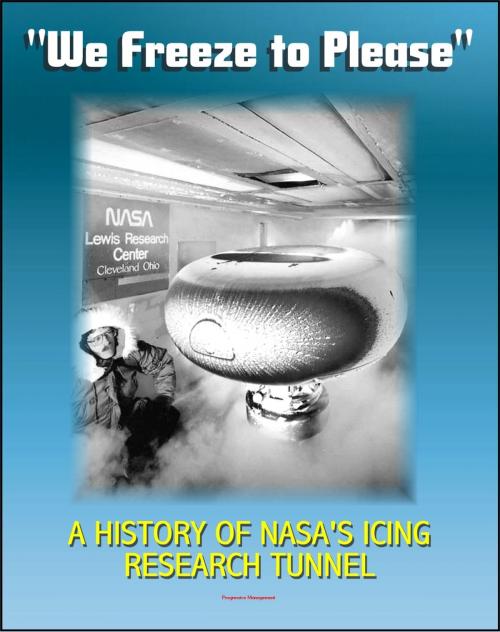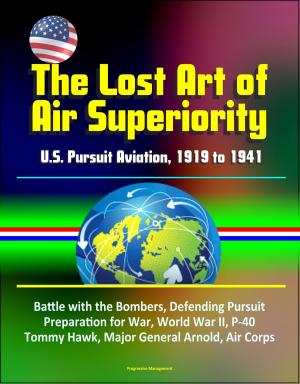"We Freeze to Please" - A History of NASA's Icing Research Tunnel and the Quest for Flight Safety (NASA SP-2002-4226)
Nonfiction, Reference & Language, Transportation, Aviation, Science & Nature, Science, Physics, Astrophysics & Space Science| Author: | Progressive Management | ISBN: | 9781466110083 |
| Publisher: | Progressive Management | Publication: | February 29, 2012 |
| Imprint: | Smashwords Edition | Language: | English |
| Author: | Progressive Management |
| ISBN: | 9781466110083 |
| Publisher: | Progressive Management |
| Publication: | February 29, 2012 |
| Imprint: | Smashwords Edition |
| Language: | English |
This official NASA history document - converted for accurate flowing-text e-book format reproduction - is a comprehensive account of NASA research on aircraft icing, a major threat to air safety.
From the preface: Icing research has received only limited attention from historians. Yet the problem of icing has challenged aviators and aircraft manufacturers since the earliest days of powered flight—and continues to do so. At various times in the past, victory has been declared over the menace of icing, but these claims have always proved premature. Despite more than seven decades of research into the phenomena, much remains to be learned about the nature of icing and how best to respond to it.
In the United States, the National Advisory Committee for Aeronautics (NACA) and its successor, the National Aeronautics and Space Administration (NASA), have led the way in investigating the interaction between aircraft and the icing environment, as well as in developing various means to protect fixed- and rotary-wing machines. To be sure, icing research has never been given a high priority. When the NACA began to investigate icing during the 1930s, most of the engineers at the Langley Memorial Aeronautical Laboratory were far more interested in advances in aerodynamics than they were in icing. When work shifted to the new Aircraft Engine Research Laboratory in Cleveland in the 1940s, icing research represented only a minor interest of a laboratory that was devoted to engine development. Later, the demands of the space age overshadowed NASA's work on aeronautics. Within this limited context, icing investigations usually ranked low on the aeronautical research agenda.
Perhaps because of their lack of status in the NACA/NASA world, icing researchers tended to form a close-knit group. Untroubled by distinctions between fundamental research and practical engineering, they believed that they were doing important work and were making a significant contribution to safety. They found other icing enthusiasts in industry, academia, and government agencies, both in the United States and abroad, and eventually came together in an international "icing community."
In telling the story of NACA/NASA icing research, I have focused on the role of the Icing Research Tunnel (IRT) at the Cleveland laboratory. Because the experiments that were conducted in the IRT formed only part of a broader investigation into icing which encompassed flight research and computer simulation, I have included information about these topics while keeping the tunnel at the center of my study. Also, I have attempted to place the work of the NACA/NASA in the broader context of the icing problems faced by the international aviation community.
The dangers posed by icing rarely concerned aviators during the first two decades of powered flight. Lacking the instruments necessary to fly without visual references, pilots did their best to avoid clouds. As a result, encounters with icing seldom happened and were always inadvertent. The situation changed in the mid-1920s when the intrepid aviators of the U.S. Air Mail Service attempted to maintain scheduled day-and-night operations between New York and Chicago. These instrument-flying pioneers were the first group of flyers to face the icing menace on a regular basis. As one of their pilots noted at the time about the hazards of the New York-Chicago route, "the greatest of all our problems is ice."
This official NASA history document - converted for accurate flowing-text e-book format reproduction - is a comprehensive account of NASA research on aircraft icing, a major threat to air safety.
From the preface: Icing research has received only limited attention from historians. Yet the problem of icing has challenged aviators and aircraft manufacturers since the earliest days of powered flight—and continues to do so. At various times in the past, victory has been declared over the menace of icing, but these claims have always proved premature. Despite more than seven decades of research into the phenomena, much remains to be learned about the nature of icing and how best to respond to it.
In the United States, the National Advisory Committee for Aeronautics (NACA) and its successor, the National Aeronautics and Space Administration (NASA), have led the way in investigating the interaction between aircraft and the icing environment, as well as in developing various means to protect fixed- and rotary-wing machines. To be sure, icing research has never been given a high priority. When the NACA began to investigate icing during the 1930s, most of the engineers at the Langley Memorial Aeronautical Laboratory were far more interested in advances in aerodynamics than they were in icing. When work shifted to the new Aircraft Engine Research Laboratory in Cleveland in the 1940s, icing research represented only a minor interest of a laboratory that was devoted to engine development. Later, the demands of the space age overshadowed NASA's work on aeronautics. Within this limited context, icing investigations usually ranked low on the aeronautical research agenda.
Perhaps because of their lack of status in the NACA/NASA world, icing researchers tended to form a close-knit group. Untroubled by distinctions between fundamental research and practical engineering, they believed that they were doing important work and were making a significant contribution to safety. They found other icing enthusiasts in industry, academia, and government agencies, both in the United States and abroad, and eventually came together in an international "icing community."
In telling the story of NACA/NASA icing research, I have focused on the role of the Icing Research Tunnel (IRT) at the Cleveland laboratory. Because the experiments that were conducted in the IRT formed only part of a broader investigation into icing which encompassed flight research and computer simulation, I have included information about these topics while keeping the tunnel at the center of my study. Also, I have attempted to place the work of the NACA/NASA in the broader context of the icing problems faced by the international aviation community.
The dangers posed by icing rarely concerned aviators during the first two decades of powered flight. Lacking the instruments necessary to fly without visual references, pilots did their best to avoid clouds. As a result, encounters with icing seldom happened and were always inadvertent. The situation changed in the mid-1920s when the intrepid aviators of the U.S. Air Mail Service attempted to maintain scheduled day-and-night operations between New York and Chicago. These instrument-flying pioneers were the first group of flyers to face the icing menace on a regular basis. As one of their pilots noted at the time about the hazards of the New York-Chicago route, "the greatest of all our problems is ice."















